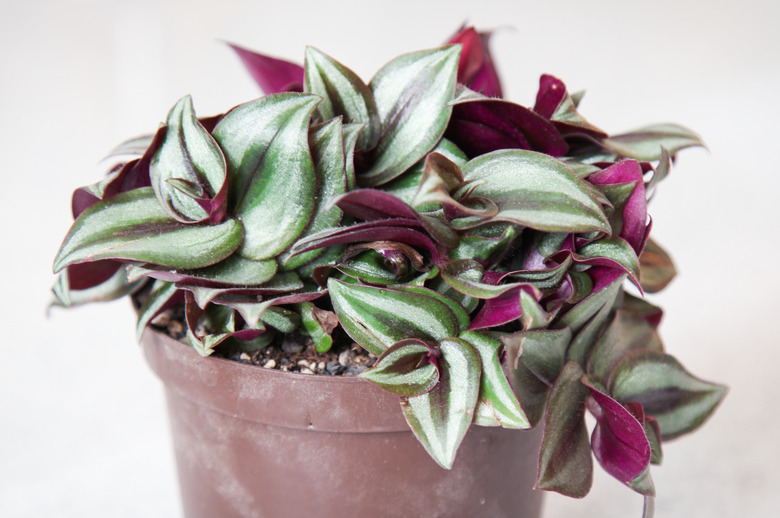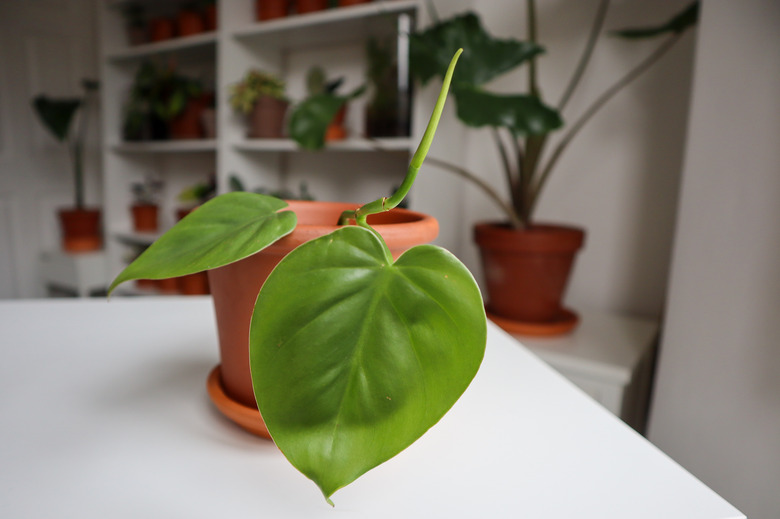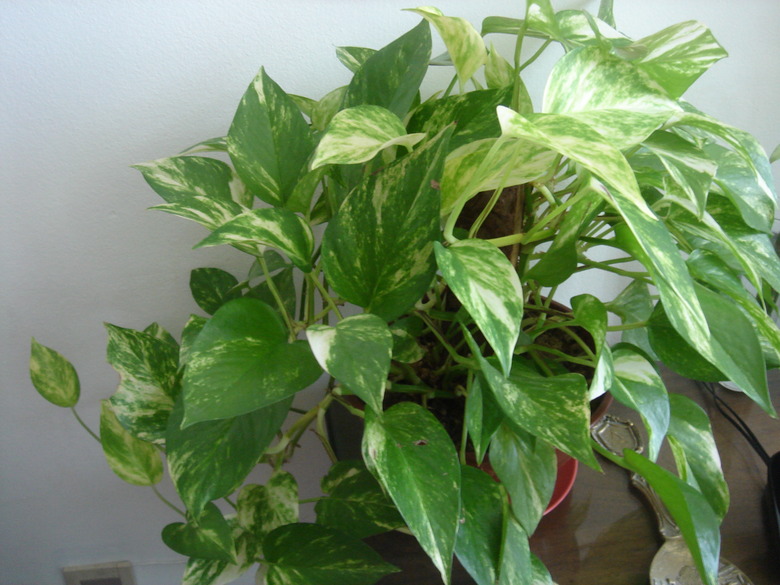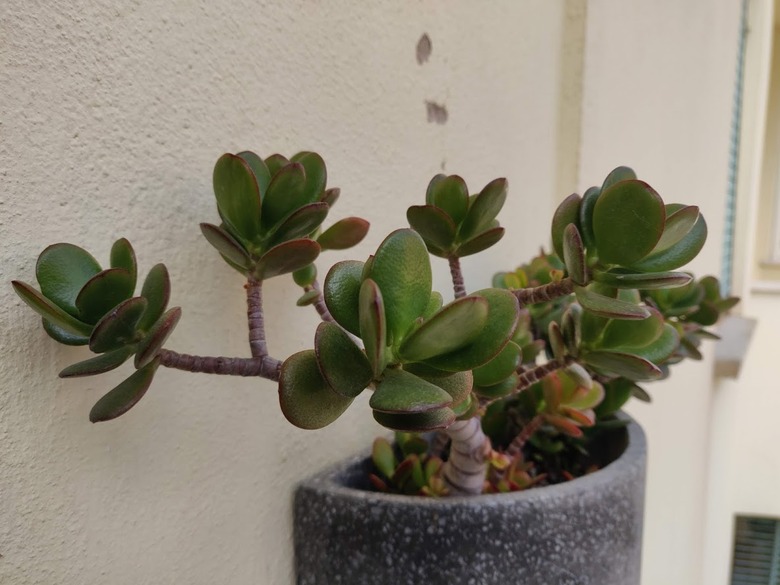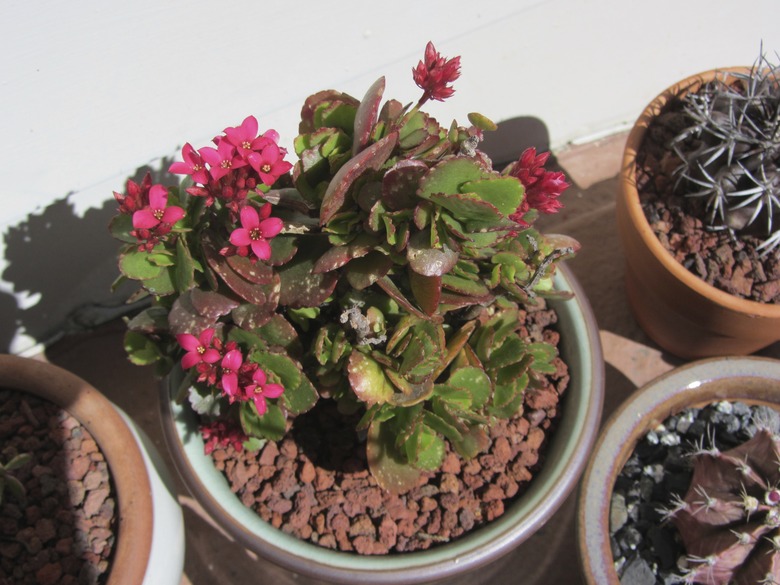Indoor Potted Plant Identification
The internet and apps that immediately identify potted plants have taken the mystery out of indoor plant identification. Leaf shape and color help lead to correct identification, as do flowers, as long as they are thoroughly described.
Throw out those plastic flowers and plants that you bought to decorate your home but that are just collecting dust. "Black thumbs" can easily become "green thumbs" with a little research and patience.
Potted indoor houseplants not only help clean indoor air but, unlike plastic plants, they can survive in low light or bright light. They are non-threatening to children and pets, and you'll be proud as you maintain your babies and watch them grow and, in many cases, flower.
Tip
Consistency is the key to successful identification and maintenance of your indoor potted plants. Select those with similar needs and create a schedule that keeps you on track with those needs.
Implementing a Maintenance Schedule
If you're starting your houseplant collection from scratch, potted plant identification should be simple. Just look at the tag in the soil where you buy your plants, and you'll not only find its name, but how to care for it. If you've inherited a helter-skelter variety of houseplants, you can use a chart or an app such as Plantsnap to identify them. You'll want to do this immediately to rule out any toxic plants that may endanger you, your family or pets.
Not all houseplants are created equal though. If you have a variety of indoor potted plants, implementing a maintenance schedule is necessary. Too much water can kill a cactus (Cactaceae spp.), while not enough water will wither a Venus flytrap (Dionaea muscipula). Knowing the amount of sunlight your indoor plant needs, its soil type and preferred pot size will help you keep your indoor garden alive and help identify which plants to add to your collection.
Categorizing Indoor Houseplants
To keep your life simple while maintaining an indoor garden, stick to one or two categories of houseplants. Succulents and cacti are the easiest to maintain as they require little care. A vine has a tendency to wander, and a fern can be finicky about its sunlight preferences. Flowering houseplants add magnificent color to your décor but can be fussy unless they're orchids, which prefer to be ignored.
Identifying Houseplants by Leaf Shape
Leaf shape, size and how they appear on the plant are valuable indicators in identifying indoor houseplants. Leaf color and whether it is variegated or solid color also contribute to plant identification.
The internet is helpful in identifying indoor houseplants by pictures, but you must be precise when entering search information. For example, enter: "twisted vine, large heart-shaped leaves, dark-green, waxy leaves, houseplant," and the result can be a philodendron (Philodendron hederaceum) or a hoya (Hoya carnosa) plants.
A slight change from "twisted" vine to "straight" vine provides this result: pothos (Epipremnum aureum) or silver inch plant (Tradescantia zebrina). Be precise.
Identifying Flowering Succulents
Succulents hold water within their leaves, which means the less water you give them, the better. The most famous and easiest to maintain succulent is the jade plant (Crassula ovata). There are hundreds of species of crassula, but if yours flowers, has five symmetrical petals, thick leaves, woody stems and may die after flowering, it is a jade.
Another flowering succulent that is popular in the United States, the kalanchoe (Kalanchoe blossfeldiana) is a popular Christmas plant with bright pink flowers that last up to three months.
Creating a Houseplant Garden
Whether you want plants that are low maintenance, require low light, help clean air, are safe around children and pets, or if you just want color and simplicity in your life, potted houseplant identification is where you start.
The internet, plant identification apps, pictures and even your local garden center can guide you in identifying and selecting the appropriate houseplants.
